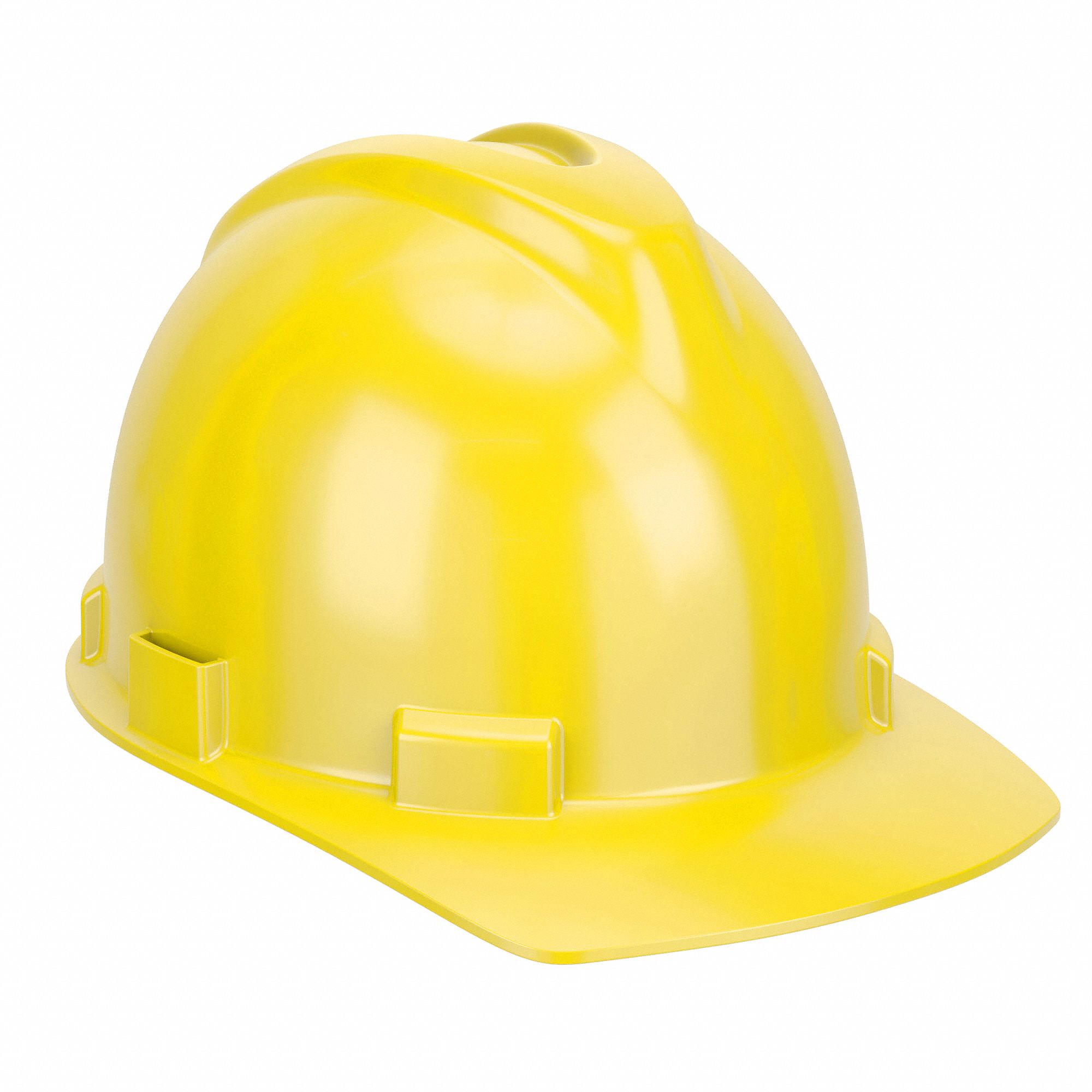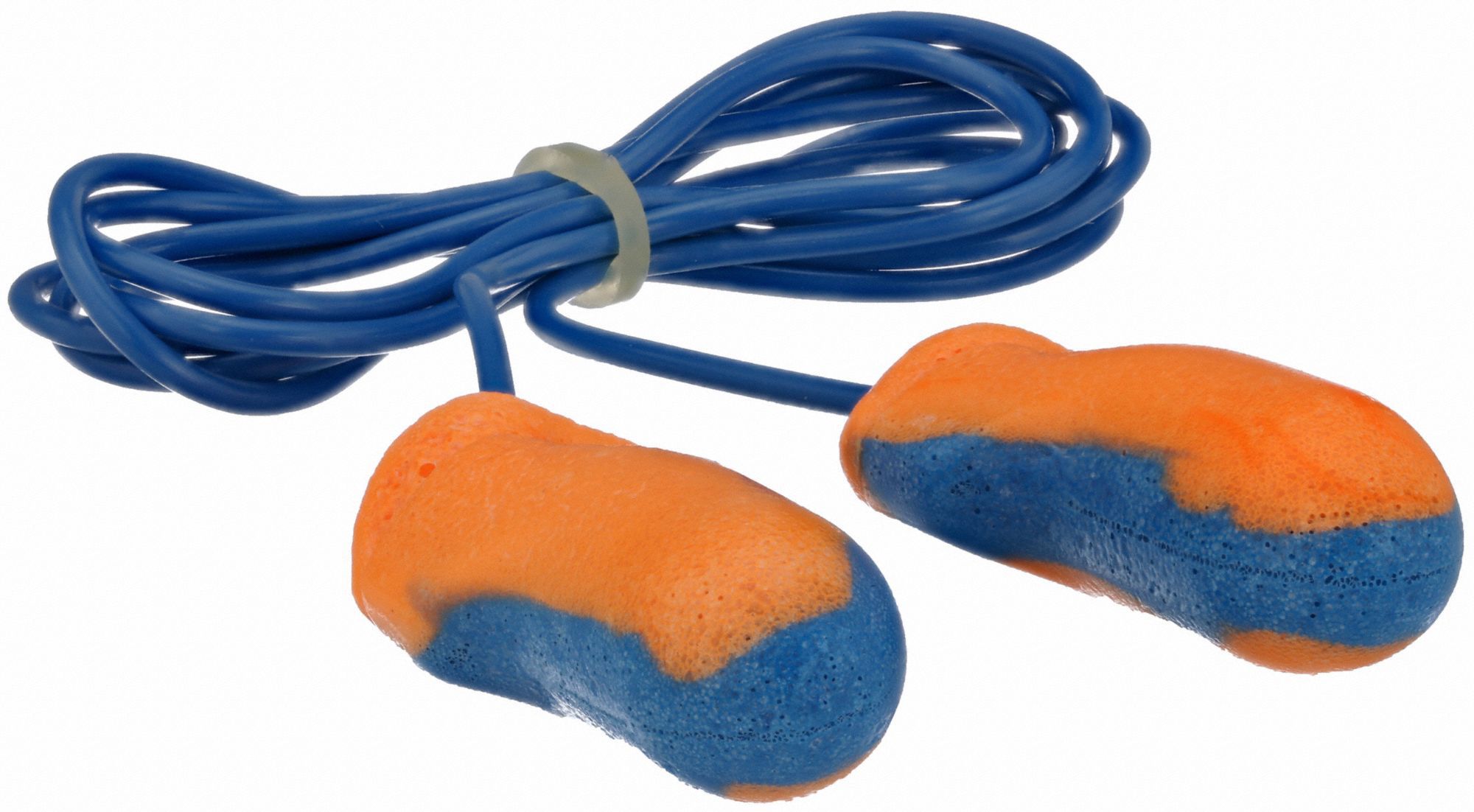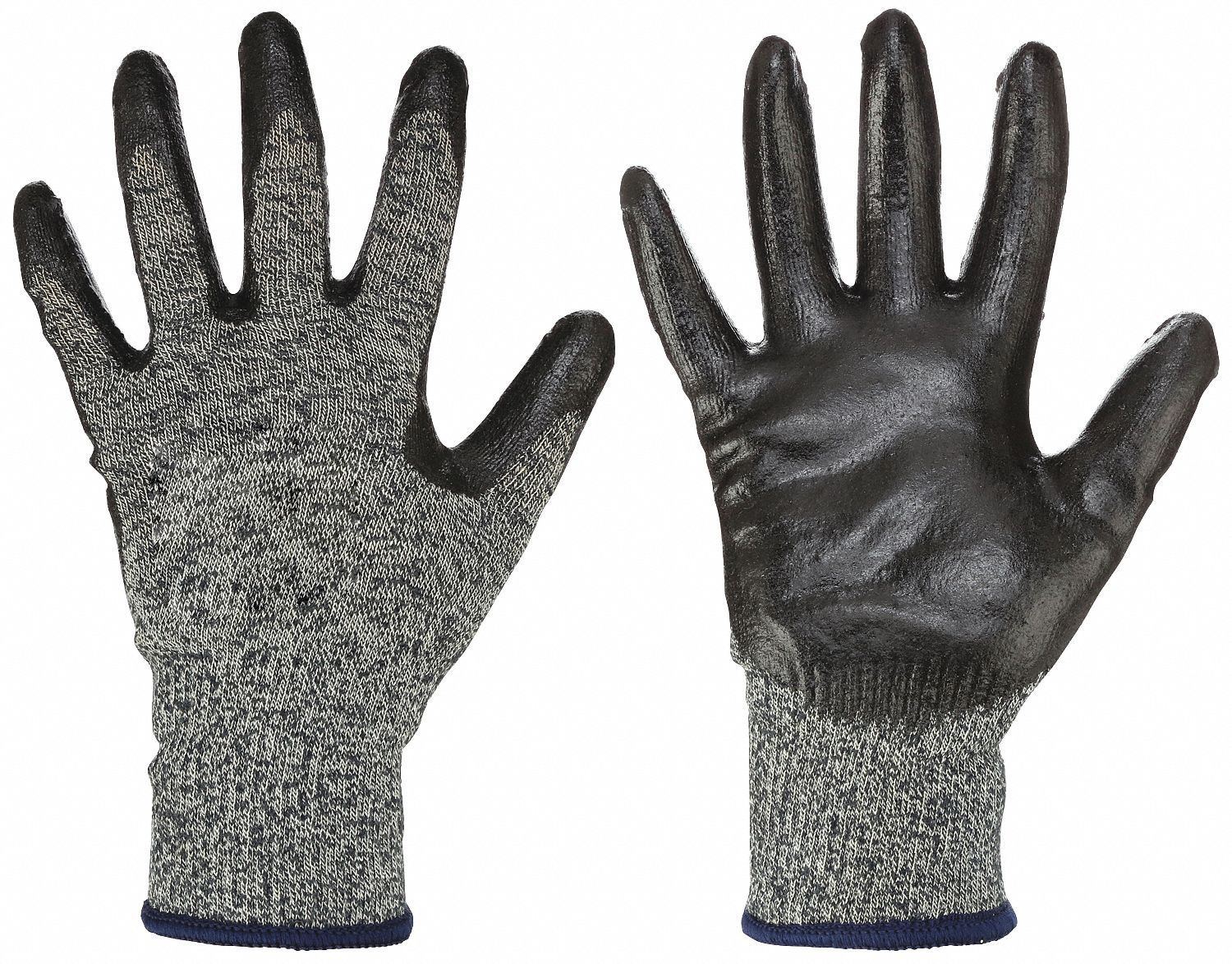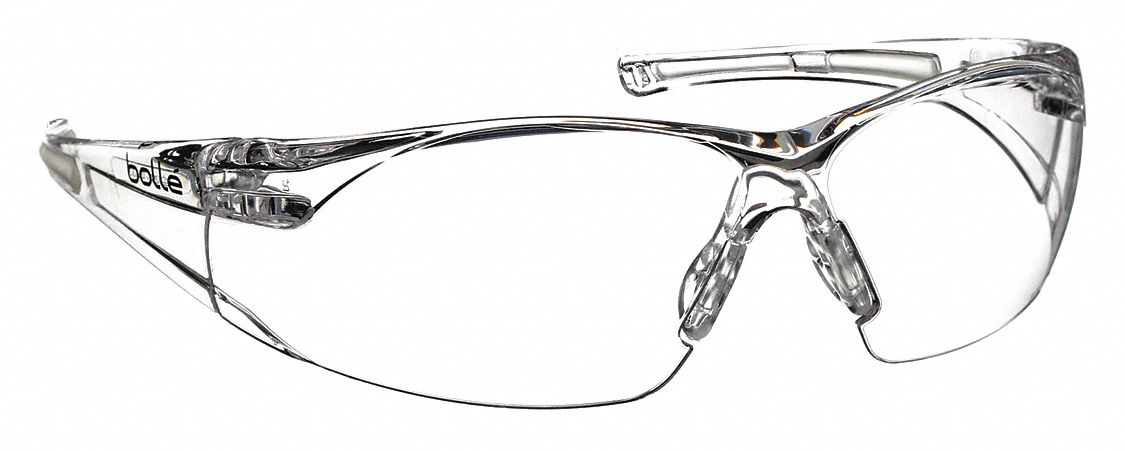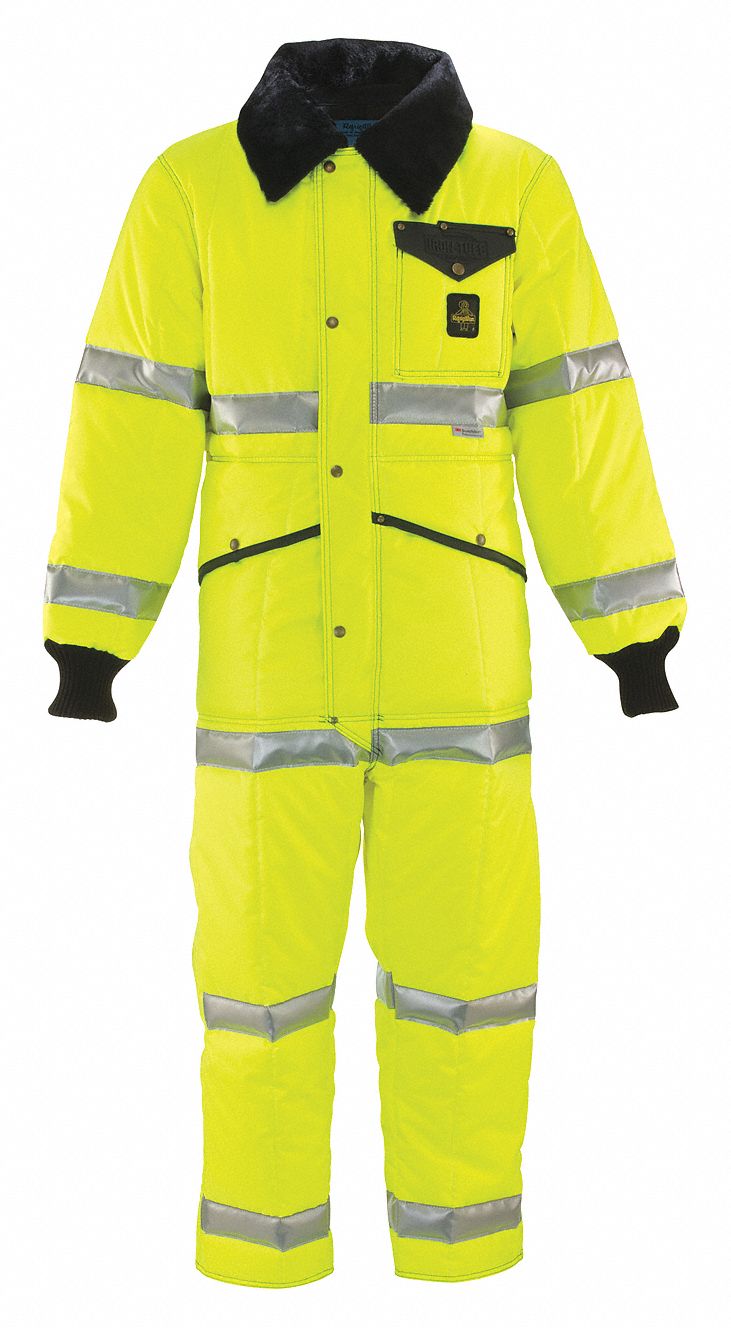

Environmental, Health & Safety Training Webinars
By Grainger Editorial Staff 10/18/23


This on-demand series offers industry information and updates to help keep you informed of environmental, health and safety trends affecting your operations. Participants will receive a certificate of attendance providing documentation for 1 credit hour of training. This training does not meet any continuing education unit (CEU) requirements.
Understand OSHA's Fall Protection NEP
Because falls from heights, according to OSHA, remain the leading cause of fatalities and serious injuries in all industries, they have introduced a National Emphasis Program (NEP) and a PPE rule revision to address worker safety. The NEP, announced in May 2023, aims to prevent falls — not only the leading cause of fatal workplace injuries, but also the most frequent violation during construction inspections over the past 12 years.
With this NEP, OSHA can now open inspections whenever they see someone working at heights, not just when they observe violations. The proposed PPE rule, published in July 2023, requires that PPE must fit the affected employee properly. Ill-fitting PPE lacks protection, discourages use of the equipment and can even create additional hazards for workers. The session will identify ways you can address this on your work sites.
Learn About Air Quality Management
Despite dramatic progress in cleaning the air since 1970, poor air quality continues to harm the health of people and the environment. In 2009, the Environmental Protection Agency determined that emissions of carbon dioxide and other greenhouse gases are driving climate change and threatening citizens’ health and welfare.
This webinar will help attendees learn ways they can manage air quality to help limit climate change effects, reduce air pollution risks and control indoor air pollutants. Grainger leaders in sustainability and field controls will also discuss Grainger solutions to air quality management.
Discover Water Management Strategies
Organizations are finding that water efficiency programs are an effective way to reduce operating costs. Efficient use of water can also help improve water quality, maintain ecosystems and protect drinking water resources. Behavioral, operational and equipment changes help mitigate the effects of inadequate water supply.
In this free webinar, attendees can learn about:
- Water balances and the true cost of water
- Potential equipment changes
- Operating and maintenance procedures
- Landscape irrigation
- Other outdoor uses
- Grainger’s solutions for water management
Implementing Effective Workplace Hazard Assessments
According to the Occupational Safety and Health Administration (OSHA) 29 Code of Federal Regulations (CFR) 1910.132(d)(1), “The employer shall assess the workplace to determine if hazards are present, or are likely to be present, which necessitate the use of personal protective equipment (PPE).”
The process of conducting a workplace hazard assessment requires involving affected employees, reviewing job procedures, identifying potential hazards, and selecting appropriate PPE. This means both actual and potential incidents must be reviewed carefully when thoroughly evaluating workplace hazards.
In this presentation, we will discuss the minimum requirements for conducting a workplace hazard assessment, how to evolve beyond compliance into risk mitigation, how to use the Hierarchy of Controls to implement solutions more effective than PPE when possible, and the technology available to improve the effectiveness of workplace hazard assessments.
Waste Management: Champion Circularity
Most organizations produce waste — either solid waste (garbage, trash, etc.) or hazardous waste — and are responsible for its proper handling and disposal. Waste management aims to keep materials in use for as long as possible and relies on the waste management hierarchy to do so.
The waste management hierarchy/pyramid is a system that focuses on avoidance, reduction, reuse, recycling, energy recovery, and finally, treatment or disposal. Grainger, along with our aligned product and service providers, can help you prioritize the most efficient use of your resources to reduce greenhouse gas emissions, increase circularity and save money.
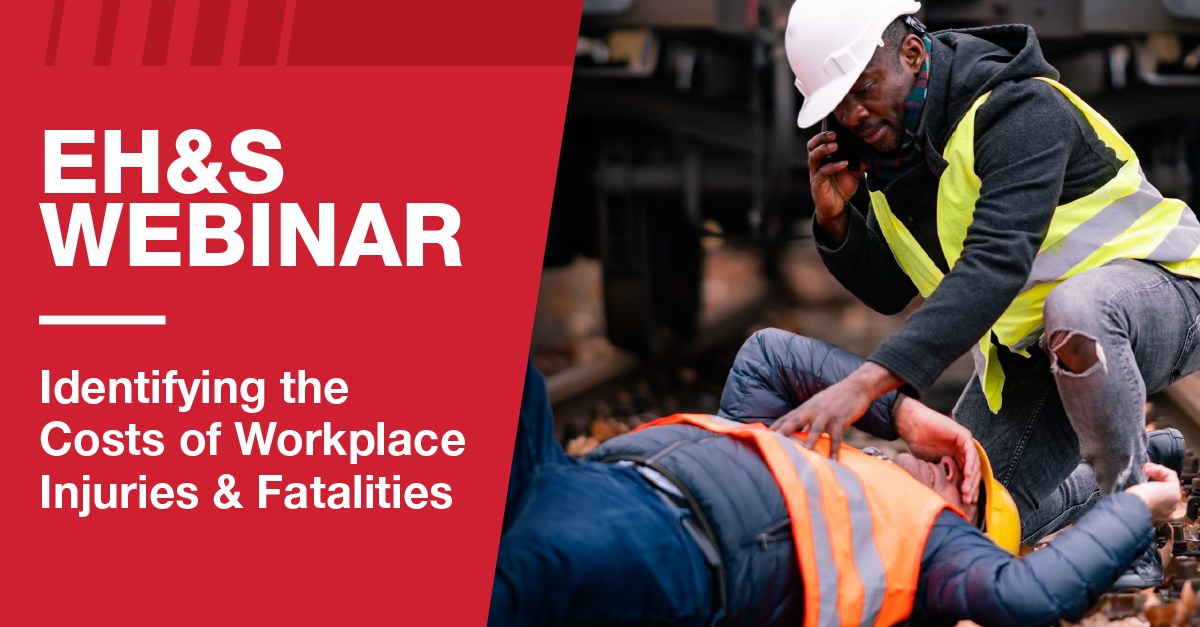

Identifying Direct & Indirect Costs of Work Injuries & Fatalities
Workplace injuries and fatalities present billions of dollars of costs to U.S. employers every year. In addition to direct worker’s compensation costs, these incidents result in lasting effects to productivity, morale, reputation and insurance premiums. In this presentation, we will discuss the most prominent risks to employers based on industry data, the total impact of direct and indirect costs, how to identify gaps in safety management, how to discuss safety solutions in terms of return on investment, and what resources are available to accurately determine costs and benefits of effective safety solutions.
Aligning your fall protection program with ANSI/ASSP Z359 standards can help you create and maintain an effective program. This webinar distills hundreds of pages from the Fall Protection Code and the 20 program elements into items you can better manage. It also will provide tools to help evaluate your program and address gaps.
Learning Outcomes
- Discuss the top risks to employers based on direct and indirect costs of workplace injuries and fatalities.
- Evaluate the total impact of injuries, including medical costs, productivity loss, employee morale, and organizational reputation.
- Discuss the return on investment for preventative safety solutions, beyond injury avoidance, and how to identify and measure gaps that present increased risk.
- Identify resources for determining the costs and benefits of effective solutions to prevent workplace injuries and fatalities.


Energy Management: Keys to Sustainability & Cost Savings
Energy is undeniably one of the fundamental issues associated with sustainable development goals. Electric power is one of the largest contributors to the generation of greenhouse gas (GHG) emissions affecting the climate. The biggest opportunity for most customers to reduce GHG emissions is through energy management initiatives and the utilization of clean or renewable energy.
Grainger, along with our aligned product and service providers, is here to help you navigate your energy management initiatives. Join this discussion and learn how to:
- Increase energy efficiency
- Conserve energy
- Harness renewable energy
- Reduce costs


Grainger Sustainability Solutions: Protecting the Planet, People & Profits
In 1987, the United Nations defined sustainability as “meeting the needs of the present without compromising the ability of future generations to meet their own needs.” Sustainable development requires an integrated approach that takes into consideration environmental, social, and economic concerns (the triple bottom line - planet, people, and profit). Grainger, along with our aligned product and service providers, is here to help you navigate your sustainability journey. Join this discussion and learn:
- Where to being the sustainability journey
- Ways to measure your current performance
- Opportunities that exist within energy, waste, air quality and water management to improve your sustainability initiatives


Make the Most of Your Fall Protection Investment with ANSI Z359
Managing fall risk is a smart, ethical investment and a legal requirement. With the changing fall protection industry landscape, the ANSI/ASSP Z359 standards – or Fall Protection Code – can help you create best practices and ensure your fall protection investments help reduce risk and increase safety for your workers at height.
Aligning your fall protection program with ANSI/ ASSP Z359 standards can help you create and maintain an effective program. This webinar distills hundreds of pages from the Fall Protection Code and the 20 program elements into items you can better manage. It also will provide tools to help evaluate your program and address gaps.
Learning Outcomes
- Identify how changes to the standards impact key aspects of your fall protection program
- Discuss how to increase the value associated with your future equipment purchases
- Get ideas on how to invest in your fall protection program in the coming years
- Leverage Grainger products, resources and services to better protect workers at height
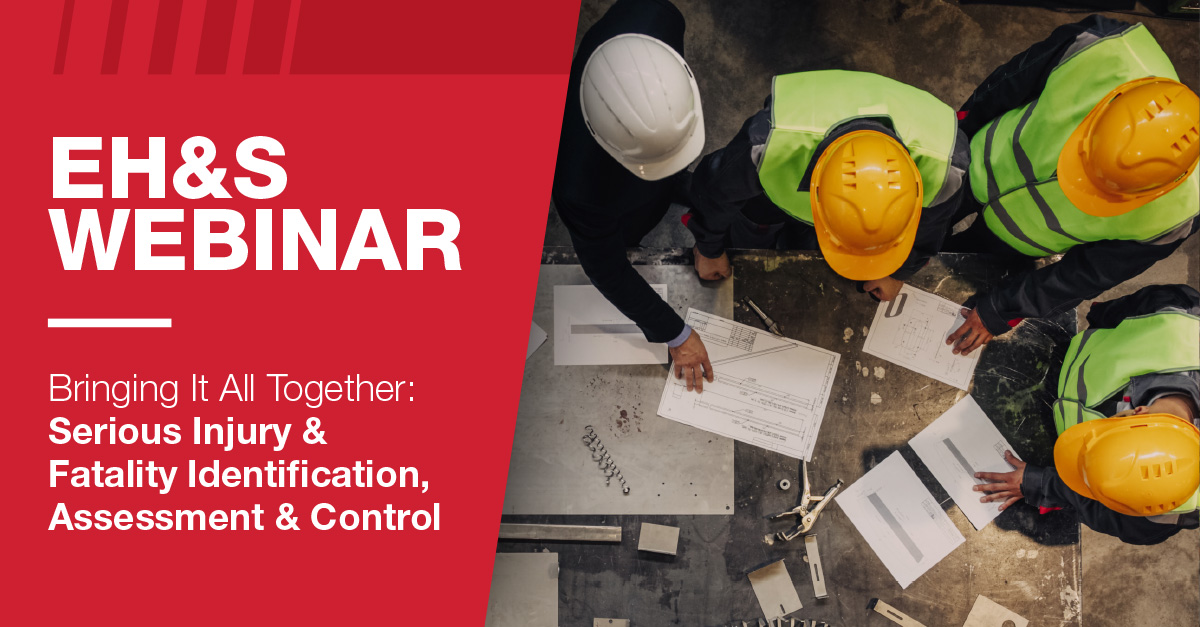

Bringing It All Together: Serious Injury and Fatality Identification, Assessment and Control
While it is encouraging that U.S. workplace incident and injury rates have continued to decline at a steady pace, the same cannot be said for serious injuries and fatalities. Identifying, assessing and controlling both actual and potential serious injuries and fatalities is a must.
After completing this webinar, attendees will understand:
- The historical Heinrich Safety Triangle and the "new" safety triangle
- Serious Injury and Fatality Actual and Potential and the role they play
- Insight into the importance of risk assessment
- Controls and critical controls
- How Grainger can help
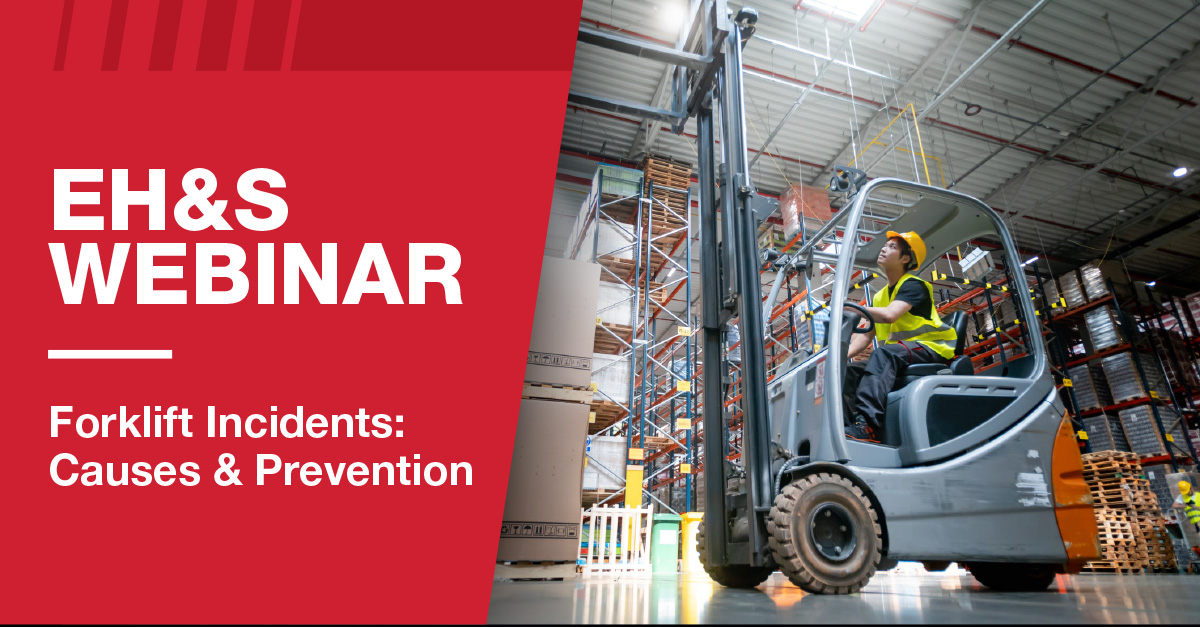

Forklift Incidents: Causes & Prevention
Approximately 1 million forklifts are operated in U.S. companies today by 1.5 million forklift operators. According to the National Safety Council’s Injury Facts®, forklifts were the source of 7,290 nonfatal injuries involving days away from work (17 median days) and 78 work-related fatalities in 2020. Join us as we discuss why forklifts can be so hazardous, the most frequent types of serious forklift incidents, common causes of forklift incidents and steps that can be taken to help prevent them.
Attendees will have a better understanding of the:
- Most frequent serious forklift incidents and the common causes
- Importance of identifying potential hazards associated with operating forklifts
- Importance of assessing the likelihood and consequences of potentially serious or fatal forklift incidents
- Steps to take to help prevent forklift incidents


Connected Worker Technology
Connected work empowers employees with modern digital tools to improve productivity, quality and safety, creating visibility across sites, plants and facilities. Occupational risks and hazards come from various sources and can adversely affect safety, productivity and health. Wearables are smart devices worn as accessories or garments to collect data on physiological and environmental conditions.
Connected worker solutions engage the wearables to a centralized hub for data storage, management, analytics, visualization, security and actions. This technology helps with:
- Hazard identification, assessment and control
- Tracking incidents, near misses, etc.
- Trainings
- Asset management
- Quality control and environmental compliance
Attendees will have a better understanding of:
- Connected work definitions and wearable examples
- The relationship between connected work and wearables
- Interface of wearables and connected work — tracking incidents, near misses, etc.; trainings; asset management; and environmental compliance
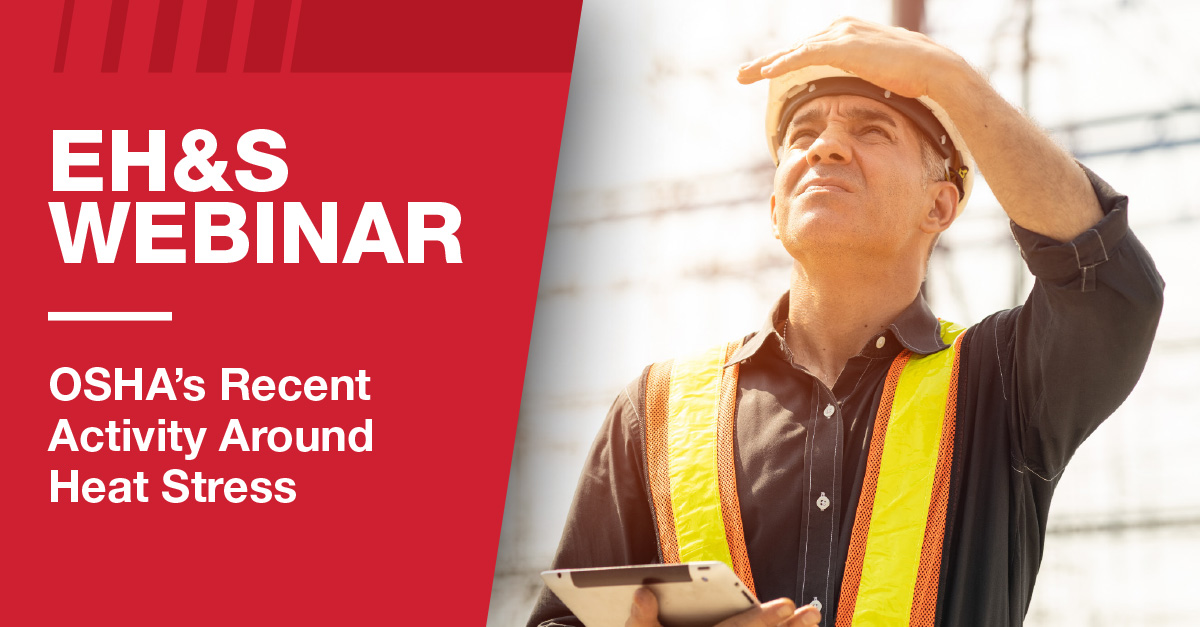

OSHA's Recent Activity Around Heat Stress
According to OSHA, heat is the leading cause of death among all weather-related phenomena, and it's becoming more dangerous, as 18 of the last 19 years were the hottest on record. On October 27, 2021, OSHA published an Advance Notice of Proposed Rulemaking (ANPRM) for Heat Injury and Illness Prevention in Outdoor and Indoor Work Settings in the Federal Register.
This publication begins the OSHA rulemaking process to consider a standard specific to heat-related injury and illness prevention. Such a standard would more clearly define employer obligations necessary to keep people protected from hazardous heat. Preventing and reducing the number of occupational injuries, illnesses and fatalities caused by exposure to hazardous heat is the overall goal with the new ruling.
Attendees will walk away with a better understanding of:
- The importance of identifying potential hazards associated with heat stress
- Assessing the likelihood and consequences of potentially serious or fatal heat stress incidents
- Implementing controls and critical controls to prevent or mitigate potentially serious or fatal heat stress incidents
- Reassessing the likelihood and consequences of heat stress related incidents
- Understanding Grainger’s solution for heat stress
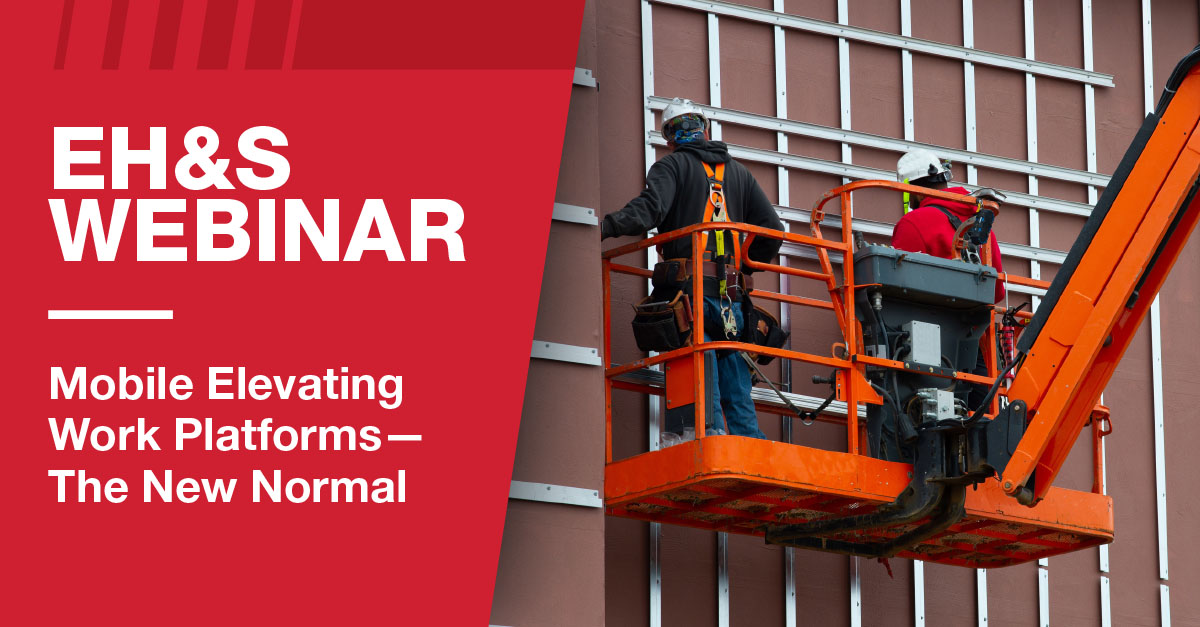

Mobile Elevating Work Platforms: The New Normal
In this webinar, we will discuss the update to the ANSI/SAIA A92 standards and the new “normal” created for equipment formerly known as aerial lifts, aerial work platforms (AWPs), etc. —now referred to as mobile elevating work platforms (MEWPs). These standards govern all telescopic booms, articulated booms and scissor lifts built on or after June 2020. MEWPs built before the standards took effect are grandfathered in and won’t have to be retrofitted to the new design standards. But the new standards on safe use and training apply to all MEWPs regardless of their age.
The integration of new MEWPs will take eight to 10 years in most rental fleets. However, it’s still important for all potential suppliers and users to understand the impact of the new standards.
Attendees will walk away with a better understanding of:
- Roles and responsibilities as defined by ANSI/SAIA A92
- The importance of identifying potential hazards associated with operating mobile elevating work platforms (MEWPs)
- Assessing the likelihood and consequences of potentially serious or fatal MEWPs incidents
- Implementing controls and critical controls to prevent or mitigate potentially serious or fatal MEWPs incidents
Register to view this on-demand webinar
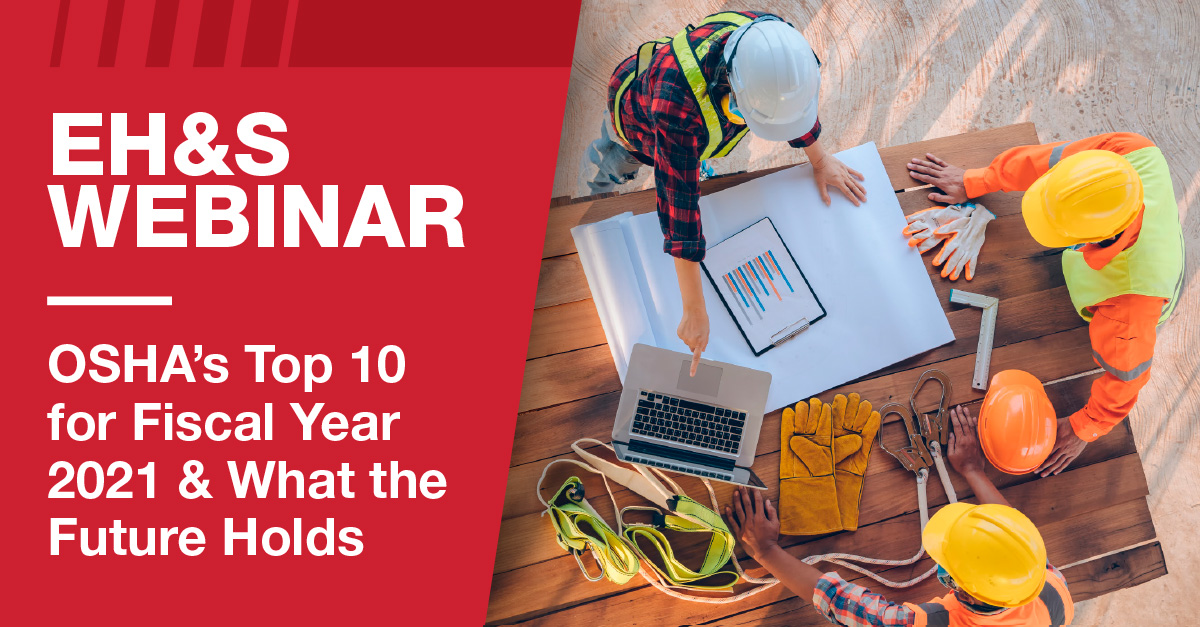

OSHA's Top 10 for Fiscal Year 2021 and What the Future Holds
Every year, the Occupational Safety and Health Administration (OSHA) releases their top 10 list of most frequently cited standards along with data to support it. Evaluating the list and how it relates to your organizations is not an easy task. During this webinar, we will discuss the top 10 list for fiscal year 2021 and how to make the most of it—how to help make your organizations better, apply lessons learned and avoid those same costly mistakes that can lead to serious injuries, illnesses and fatalities. We will also look forward and discuss what the future holds according to OSHA.
Attendees will walk away with an increased understanding of:
- The impact of OSHA’s top 10 list and supporting Bureau of Labor Statistics (BLS) data
- The importance of identifying, assessing and controlling serious injuries and fatalities
- OSHA’s current regulatory agenda
- Grainger’s total EH&S solution


EH&S Compliance Reminders
A new year means a fresh start. Join Anthony Jonas from US Compliance and Hollie Guidi, Grainger Virtual Safety Specialist, as they discuss federal DOT, EPA and OSHA monitoring, recordkeeping, reporting and written program development requirements that may impact your organization. Plan and be prepared. At the conclusions of this webinar, participants will have a better understanding of the requirements governing:
- Department of Transportation’s (DOT’s) drug and alcohol testing, driver qualification, hours-of-service, vehicle maintenance recordkeeping and releases of hazardous materials during transportation reporting
- Environmental Protection Agency’s (EPA’s) Clean Air Act Title V air permitting monitoring, recordkeeping, and reporting; Clean Water Act discharges of oil or hazardous substances notifications; Comprehensive Environmental Response Compensation and Liability Act (CERCLA) and Emergency Planning and Community Right-to-Know Act (EPCRA) hazardous substances release reporting; EPCRA Tier II reporting, and Resource Conservation and Recovery Act (RCRA) hazardous waste generator monitoring, recordkeeping and reporting
- Occupational Safety and Health Administration’s (OSHA’s) annual training, injury/illness recordkeeping and reporting; and written program/plan development

Assessing Risk Plays a Key Role in Preventing SIFs
Preventing and controlling serious injury or fatality incidents requires a specialized focus. Join us for an interview-style Q&A with Tim Fisher, CSP, CHMM, CPEA, ARM, STS, CAE, Director, Standards Development and Technical Services at American Society of Safety Professionals and Travis Kruse, PhD, CSP, CHMM, Grainger Safety Strategy in a discussion on the importance of the risk assessment process when focusing on identifying and analyzing incidents resulting in, or with the potential to result in, serious injuries or fatalities. Many techniques are available for assessing and managing risk. Tim and Travis will review the pros, cons and pitfalls of the five most used methods. Attendees will walk away with understanding of:
- The need to focus on incidents resulting in SIFs during the risk assessment process
- The risk assessment three-step process acumen
- An awareness of five commonly used risk assessment methods – pros and cons of each


Permit Required Confined Space Serious Injury & Fatality Detection and Solutions
From 2011 to 2018, 1,030 workers died from occupational injuries involving a confined space. Trench collapses led to the deaths of 168 workers, falls to a lower level accounted for 156 deaths, and there were 126 deaths due to inhalation of a harmful substance over the 8-year period. Many different occupations work in and around confined spaces. The three occupations with the largest number of fatalities involving confined spaces during this period were construction laborers; farmers, ranchers, and other agricultural managers; and front-line supervisors of construction trades and extraction workers.
At the conclusion of this Webinar, you will have a better understanding of:
- Confined spaces and permit-required confined spaces
- Importance of hazard(s) identification and risk assessments
- Critical controls needed to reduce serious injury and fatality potential
- Grainger’s solution to help keep your people safe and healthy
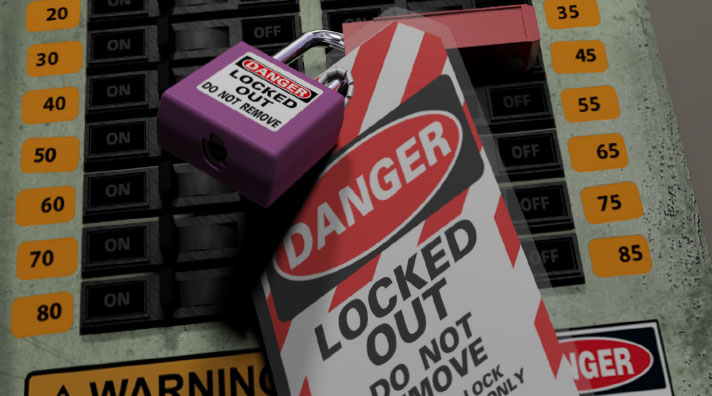

Control of Hazardous Energy (LOTO)—SIF Detection and Solutions
Machine and equipment energy sources can be hazardous to workers. During the servicing and maintenance of machines and equipment, the unexpected startup or release of stored energy can result in serious injury or death to workers. View this webinar on lockout/ tagout insights focused on helping to prevent and mitigate SIFs.
At the conclusion, you will gain a better understanding of:
- The relationship between OSHA’s control of hazardous energy (lockout/tagout), electrical and machine guarding standards
- Workers who service and maintain equipment routinely and face the greatest risk of injury
- Causes of lockout/tagout incidents
- Critical controls that are needed to help reduce serious injury and fatality potential
- Grainger’s solutions to help keep your people safe and healthy


Focusing on Serious Injuries & Fatalities— What Can You Do About It?
The rate of serious injuries and fatalities (SIFs) are declining much slower than non-fatal injuries and illnesses. Listen in as we discuss:
- Serious injuries and fatalities, and the impact on businesses and families
- Best practices from organizations that are making a difference
- Select SIF categories and SIFs potential related to working at elevated heights, confined space, lockout/tagout and electrical safety
- How to begin focusing on SIFs (e.g. SIF assessment)
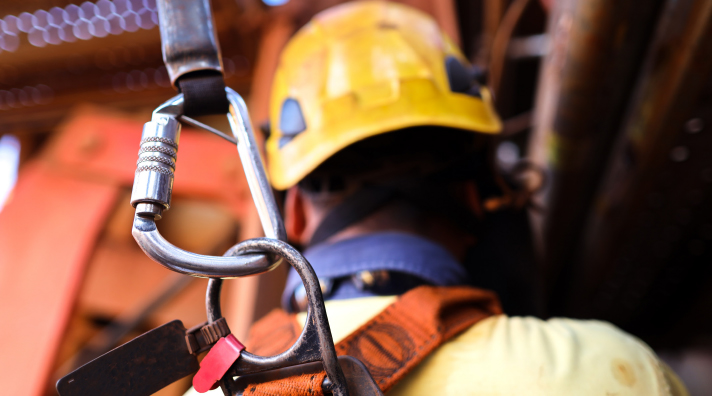

Working at Elevated Heights— SIF Detection and Solutions
Join us as we discuss working at elevated heights and how the potential for SIFs is a major concern. Every organization has unique working at elevated heights risks, circumstances and options that must be evaluated so that proper controls can be put in place to help reduce the potential for SIFs. At the conclusion, you will gain a better understanding of:
- Governing fall protection standards and consensus standards
- Personal fall protection system equipment limitations
- The importance of a risk assessment
- Critical controls that are needed to reduce serious injury and fatality potential
- Grainger’s Working at Elevated Heights solution


Electrical Safety Serious Injuries and Fatalities (SIFs) Detection and Solutions
According to the Electrical Safety Foundation International (ESFI), there were 166 electrical fatalities in 2019, which was a 3.75% increase over 2018 and the highest number of electrical fatalities since 2011.
Listen in as we share insights related to electrical safety with a focus on preventing and mitigating SIFs.
At the conclusion, you will gain a better understanding of the:
- Relationship between OSHA’s electrical standards and NFPA 70E
- Evolution of NFPA 70E
- Common hazards working on or near live circuit tasks
- Causes of arc flash/blast incidents
- Critical controls that are needed to help reduce serious injury and fatality potential
- Grainger solutions to help keep your people safe
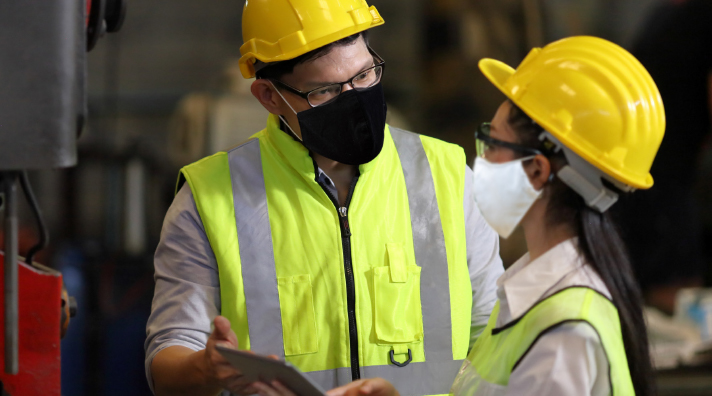

Serious Injuries and Fatalities:
What's the Problem and What Can Be Done?
In this panel discussion, you will hear from leading safety industry experts about:
- How their organizations/industries have been affected by SIFs over the last several years
- How they are addressing SIFs within their organization
- How you can begin to implement preventive measures within your organization


Extreme Cold or Wet Environments Are Dangerous: Be Aware and Prepared
Falling temperatures and wet conditions can pose threats to your employees. Learn how to help protect your work crew against cold stress, including hypothermia, frostbite, trench foot and chilblains.Topics covered will include:
- Identifying the hazards and risks of working in cold environments
- Cold stress prevention strategies on the job
- Grainger cold stress solutions
The information contained in this article is intended for general information purposes only and is based on information available as of the initial date of publication. No representation is made that the information or references are complete or remain current. This article is not a substitute for review of current applicable government regulations, industry standards, or other standards specific to your business and/or activities and should not be construed as legal advice or opinion. Readers with specific questions should refer to the applicable standards or consult with an attorney.






